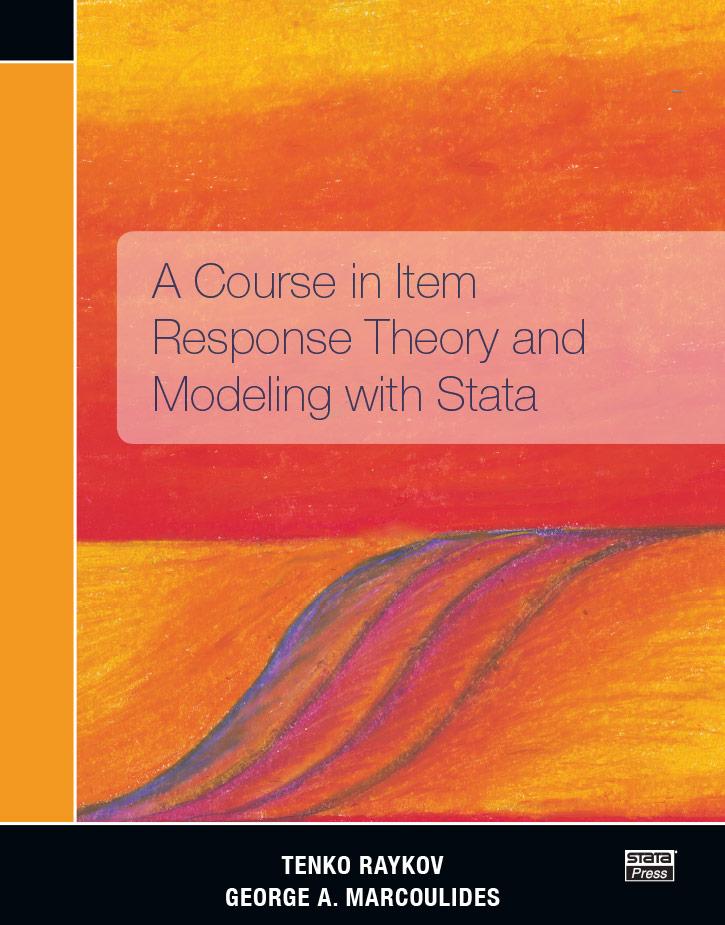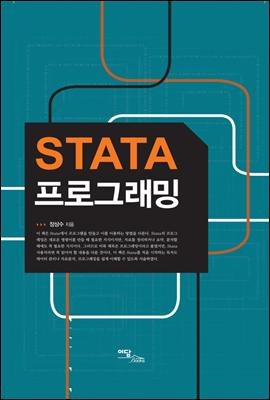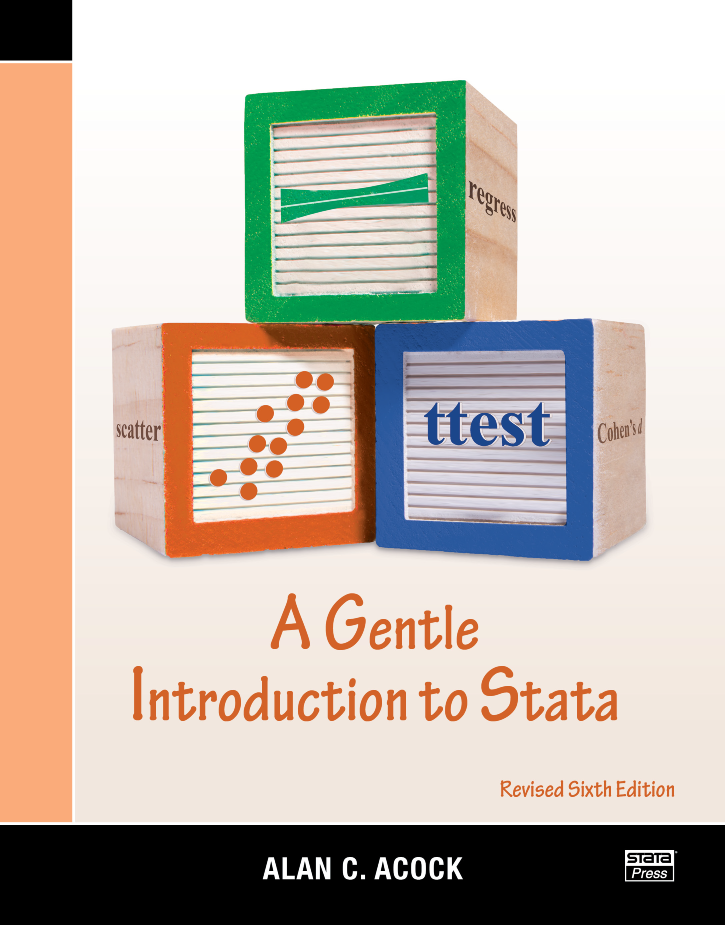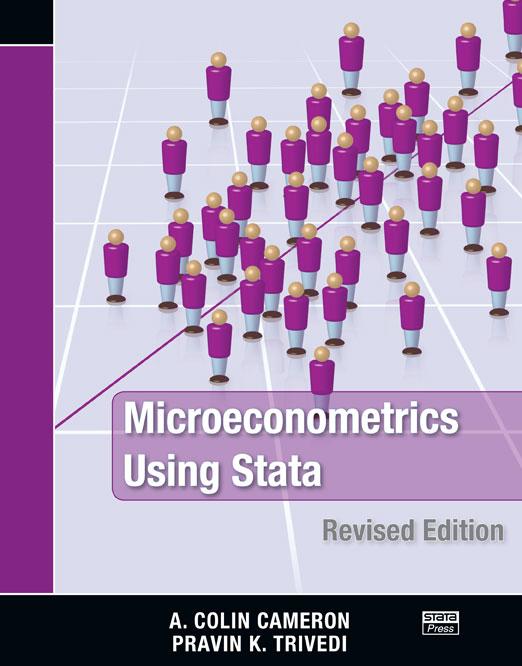
A Course in Item Response Theory and Modeling with Stata
81,000원
Authors: Tenko Raykov and George A. Marcoulides Publisher: Stata Press Copyright: 2018 ISBN-13: 978-1-59718-266-9 Pages: 270; paperback
Item response theory (IRT) is used to evaluate the relationship between a latent trait, such as mathematical ability, quality of life, or patient satisfaction, and the test questions or items intended to measure that trait. IRT is especially useful when developing new instruments, when analyzing and scoring data collected from these instruments, and when comparing instruments that measure the same trait.
A Course in Item Response Theory and Modeling with Stata, by Tenko Raykov and George A. Marcoulides, is a comprehensive introduction to the concepts of IRT that includes numerous examples using Stata's powerful suite of IRT commands.
The authors' development of IRT builds on the foundations of classical test theory, nonlinear factor analysis, and generalized linear models. Using these foundational concepts, the authors then explain IRT models, estimation via maximum likelihood, item characteristic curves, and information functions. The examples demonstrate how to fit many kinds of IRT models, including one-, two-, and three-parameter logistic models for binary items as well as nominal, ordinal, and hybrid models for polytomous items. In addition, the authors provide overviews of instrument construction and differential item functioning.
A Course in Item Response Theory and Modeling with Stata is an outstanding text both for those who are new to IRT and for those who are familiar with IRT but are new to fitting these models in Stata. It is a useful text for IRT courses and a good resource for researchers who use IRT.
Tenko Raykov is Professor of Measurement and Quantitative Methods at Michigan State University. He specializes in latent-variable and structural equation modeling, multivariate statistics, item response theory and modeling, missing data analysis, multilevel modeling, scale construction and development, longitudinal data modeling, survival analysis, and applied statistics. He is on the editorial boards of the quantitative behavioral and social science journals Structural Equation Modeling, Psychological Methods, British Journal of Mathematical and Statistical Psychology, Educational and Psychological Measurement, Journal of Educational and Behavioral Statistics, and Multivariate Behavioral Research. With George A. Marcoulides, he has also published the books A First Course in Structural Equation Modeling (2006), An Introduction to Applied Multivariate Analysis (2008), Introduction to Psychometric Theory (2011), and Basic Statistics: An Introduction with R (2012).
George A. Marcoulides is Distinguished Professor of Research Methodology in the Department of Education at The Gervitz Graduate School of Education and a member of the Quantitative Methodology in Social Sciences Program at the University of California, Santa Barbara. His research focuses on various aspects related to computational algorithms, design optimization, and longitudinal modeling; psychometric theory; and structural equation modeling. He is a fellow of the American Educational Research Association, a fellow of the Royal Statistical Society, and a member of the Society of Multivariate Experimental Psychology. He is currently editor of the journals Structural Equation Modeling and Educational and Psychological Measurement and editor of the Quantitative Methodology Book Series and is on the editorial board of numerous other scholarly journals.
1.2 The factor analysis connection
1.3 What this book is, and is not, about
1.4 Chapter conclusion
2.1.2 The normal ogive function
2.2.2 Invertibility of the logistic function, odds, and logits
2.3.2 Alternative response probability as closely related to the logistic function
3.1.2 Misconceptions about classical test theory
3.1.3 Binary random variables: Expectation and probability of a prespecified response
3.3 A short introduction to classical factor analysis
3.3.2 Model parameters
3.3.3 Classical factor analysis and measure correlation for fixed factor values
4.1.2 Extending the linear modeling idea to discrete response variables
4.1.3 The components of a generalized linear model
4.2.2 Multivariate logistic regression
4.3.2 Nonlinear factor analysis models
5.2.2 A formal definition of local independence
5.2.3 What does it mean to assume local independence in an item response theory setting?
5.4 One more look at the logistic function
5.5 The one- and two-parameter logistic models
5.5.2 Interpretation of the item parameters in the two-parameter logistic model
5.5.3 The scale of measurement
5.5.4 The one-parameter logistic model
5.5.5 The one-parameter logistic and two-parameter logistic models as nonlinear factor analysis models, generalized linear models, and logistic regression models
5.5.6 Important and useful properties of the Rasch model
5.7 The logistic models as latent variable models and analogs to nonlinear regression models
5.7.2 The logistic models as analogs to nonlinear regression models
6.2 Fitting a two-parameter logistic model
6.3 Testing nested item response theory models and model selection
6.4 Fitting a one-parameter logistic model and comparison with the two-parameter logistic model
6.5 Fitting a three-parameter logistic model and comparison with more parsimonious models
6.6 Estimation of individual subject trait, construct, or ability levels
6.7 Scoring of studied persons
6.8 Chapter conclusion
7.2 Person likelihood function for a given item set
7.2.2 Maximum likelihood estimation of trait or ability level for a given person
7.2.3 A brief visit to the general maximum likelihood theory
7.2.4 What if (meaningful) maximum likelihood estimates do not exist?
7.5 Testing and selection of nested item response theory models
7.6 Item response model fitting and estimation with missing data
7.7 Chapter conclusion
8.2 Why should one be interested in item information, and where is it maximal?
8.3 What else is relevant for item information?
8.4 Empirical illustration of item information functions
8.5 Test information function
8.6 Test characteristic curve
8.7 The test characteristic curve as a nonlinear trait or ability score transformation
8.8 Chapter conclusion
9.2 How to apply Lord’s approach to instrument construction in empirical research
9.3 Examples of target information functions for applications of the outlined procedure for measuring instrument construction
9.4 Assumptions of instrument construction procedure
9.5 Discussion and conclusion
10.2 Two main approaches to differential item functioning examination
10.3 Observed variable methods for differential item functioning examination
10.4 Using Stata for studying differential item functioning with observed variable methods
10.5 Item response theory based methods for differential item functioning examination
10.6 Chapter conclusion
11.2 A key distinction between item response theory models with polytomous and dichotomous items
11.3 The nominal response model
11.4.2 Rating scale model
11.6 The graded response model
11.7 Comparison and selection of polytomous item response models
11.8 Hybrid models
11.9 The three-parameter logistic model revisited
11.10 Chapter conclusion
12.2 A main methodological principle underlying multidimensional item response theory
12.3 How can we define multidimensional item response theory?
12.4 A main class of multidimensional item response theory models
12.5 Fitting multidimensional item response theory models and comparison with unidimensional item response theory models
12.5.2 Comparing a multidimensional model with an unidimensional model




